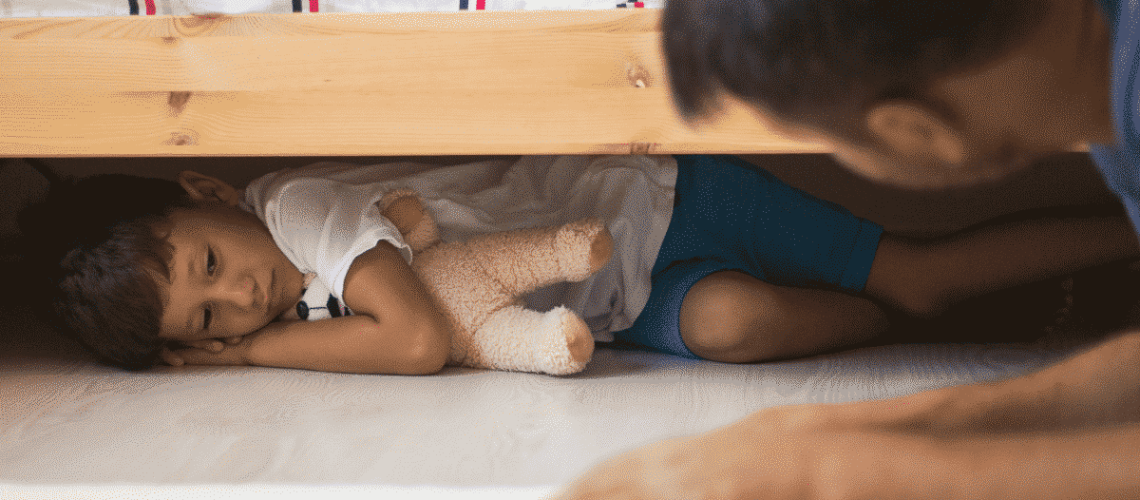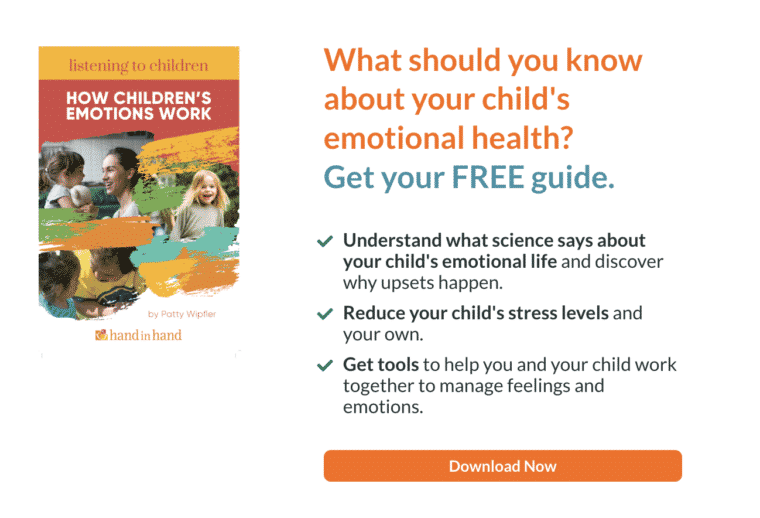Recently the ceiling in our living room collapsed.
My kids were at one end of the room, playing a game with their dad. I was in the kitchen, trying (and failing) to sort out some jobs online.
From nowhere, I heard an enormous explosion, followed by screaming.
Part of the ceiling had come down but, very fortunately, it was all at the other end of the room to my family. Somehow the falling plaster landed neatly between smashable items, trashing only a half completed board game.
Why we should practice emotional first aid
Amazingly, no one was physically hurt, but if they had been, I would have jumped into first aid mode, washing wounds and applying ice packs. Maybe even heading to hospital or calling an ambulance if needed.
We all know about physical first aid, even if we haven’t a clue how to actually perform CPR. So why don’t we tend to think about ‘emotional first aid’?
Life being what it is, we will all encounter challenges along the way that need a bit of emotional support. Just like we might plan for physical first aid, for scraped knees or a bumped head, by keeping supplies of antiseptic, band-aids and painkillers in the house, it’s also helpful to have a plan for supporting emotions when accidents happen. A plan for emotional first aid.
Making a plan for emotional first aid
What follows is my current best understanding of how an emotional first aid plan came together for me, and how I used the Hand in Hand tools ideas to support my family’s emotions through our scary moment. Remember that every situation is unique; you are the specialist in your family, and you may choose to do things differently.
Has your family been impacted by significant world events including natural disasters or senseless violence? This article from Hand in Hand Founder Patty Wipfler shares supportive ideas to heal and recover. Read Helping Children Exposed to Shocking Events.
What happens when we encounter threat?
When something scary happens, our bodies and brains react instinctively to keep us safe the best way they know how. Via a delicate and intricate interplay between the sympathetic nervous system and the stress hormones that flood our system, we enter fight or flight mode. This gets us ready to fight off or escape the threat.
These processes are outside the influence of conscious thought. Our body simply reacts, to preserve life. Even once the situation is resolved and we are safe again it takes time to return to our original non-threatened state.
Sometimes we react like this when there is no real threat
While some events that trigger this response are clearly dangerous, at other times we react in this way to perceived threats. Right now, in the 21st century, these may not represent a genuine risk to our safety, but we still feel the racing heart and sweaty palms.
A churning stomach when you need to make a difficult decision. The hyper-alert state you enter when a car’s engine whips, cracks and backfires. Jittery feelings that bubble up when you spot your kid stepping on stage in the school play.
These are all examples of times your body might tip into “survival mode” in response to a perceived threat even when there is little or no real danger.
These responses are based both in our shared evolutionary history as humans and our own personal life experience. For example, a sudden explosive sound (eg that backfiring car, or a balloon popping), might cause a brief shock followed by a rapid recovery for one person, while another who experienced earlier trauma involving loud noises might end up in a full survival response which will require much more support.
We’re all different. But understanding how the body responds when threatened is useful when you want to support yourself and your children through a fight or flight response.
Discharging energy after a traumatic event is very helpful for recovery
Trauma specialist and author of Waking the Tiger, Healing Trauma, Peter Levine, observed that wild animals are rarely traumatised by life-threatening events. Their bodies react to keep them safe and once the threat has passed they may tremble all over, discharging the energy in their system, before going on their way, seemingly without long term impacts from the event.
This is often not the case for us humans.
Our thinking brains kick in and disrupt these natural processes that help us recover and heal. Well meaning onlookers may do or say things that help us to calm down, outwardly at least, and move on as quickly as possible, potentially bypassing important stages of the process. We do it to ourselves even.
This happened for me, within minutes of the ceiling collapsing.
Having established that no one was physically hurt, my husband and I rapidly assessed the damage, grabbed bike helmets and Covid masks to protect us from dust and falling plaster and began moving a few key items out of the room in case the rest of the ceiling came down.
Flight and fright tells you to act fast
Looking back now, it seems like a ridiculous thing to have been doing (and the helmet and mask combination must have looked pretty wild!), but at the time, thanks to the fight or flight response, we were highly energised and needed to DO something. I guess it made sense on some level.
In the middle of my own reaction, I wasn’t thinking super clearly about my children’s emotional response. I suspect this is pretty normal. In the heat of the moment it often takes a little time to evaluate what needs to be done once physical safety has been taken care of.
My kids were visibly shaken
My children were still visibly shaken and confused. They asked if the rest of the house might also collapse. One asked, “Mummy, did it fall down because you just put up fairy lights?”
As soon as I was able to, I saw that they needed some proper attention. I focused on them. And the minute I did, they showed me how upset they were. Very upset. They rushed to hide in the kitchen with the big cutlery drawer pulled out above their heads – a useful shield in case the kitchen ceiling decided to follow suit.
They raged and cried.
And now that I was engaged, I listened.
Why children might ask for distractions…
It turns out that I wasn’t the only one trying to distract myself. They wanted screens, they said, to help them calm down.
I lovingly pointed out that they didn’t need to zone out with a screen just now. They needed connection.
They DEFINITELY disagreed.
Feeling connected allows fear to rush up to the surface. They did NOT want to feel this; it was too intense and scary. But feeling and expressing our feelings with support helps us heal and move on.
As Peter Levine says, “Trauma is not what happens to us, but what we hold inside in the absence of an empathetic witness.”
Knowing this, I gave them plenty of opportunity to rage at me. At Hand in Hand, we call this Staylistening, and it’s an important tool for supporting children through emotional moments.
You can get a deep insight in how to help your child face and recover from frightening situation in this guide: Helping Children Face Fears
Give kids a place to dump their fear
I set a loving limit that we would not be using screens just now, and let them direct their anger (and underlying fear) towards that.
I wasn’t surprised when they changed tack. Next they wanted snacks to distract them. Another kind but firm “no,” gave them more opportunities to discharge all the energy they had.
This gave them a place to dump out all the fear, in the presence of an empathic witness. Me.
Kids are very smart. Often they will hang huge feelings on a tiny pretext. This ceiling collapse had been terrifying, but it was too big an event to process directly in one chunk.
But the rage about being refused a cookie half an hour before dinner? They could freely let rip about how awful and unfair that was!
I Staylistened to everything, held a bunch of limits and loved them through it.
When I could, I reassured them. We were all unhurt. A ceiling falling in was pretty unlikely to happen again, but we would be staying out of the room till we knew it was safe. I played what Lawrence Cohen in The Opposite of Worry refers to as ‘the calm second chicken’.
He describes how a threatened chicken, immobilized by fear, will look to other nearby chickens to see if the situation is safe. “When a second chicken is walking around happily, it seems to signal to the first chicken that all is well: That second chicken isn’t scared—and hasn’t been eaten —so it must be safe for me to get up and walk around. When the second chicken is immobilized, the first one seems to think, I don’t see a hawk but that second chicken must see one since it hasn’t gotten up yet. I’d better stay where I am,” Cohen says.
By playing the role of the calm second chicken and responding in a relaxed and unworried manner, we can help children to understand that a situation is safe.
This non-verbal signalling is important in helping a worried child to co-regulate their way back to a calmer state.
Don’t forget your own emotional first aid
It’s easy to know the theory but there, in that moment, I was unsurprisingly not feeling my calmest. While I knew a Listening Partnership would be helpful (the listener would have been able to be a ‘calm chicken’ for me), it clearly wasn’t a good moment for me to step away.
Instead I took a moment to WhatsApp a wonderful group of Hand in Hand Instructor friends with a brief message. “Need to have a Listening Partnership-style PANIC because my living room ceiling just collapsed with my kids sitting at the other end of the room. Listening to the tears, refusing screens and biscuits… But AARRGGHH MY CEILING JUST COLLAPSED!!! By some miracle no one hurt and nothing broken, it can all be fixed but #$%&!!!” I typed frantically.
A flurry of replies, full of support and love came back. Just knowing that others were there, calmly ‘listening’ to me, helped me to be calm for my kids.
Feeling wired: Moving to move on the energy
Later that evening, after the dust had settled, both literally and figuratively, I remembered another piece in the emotional first aid kit.
Movement.
Moving the body helps the nervous system to resettle and realise that it’s ok to return to a safe and connected state.
It was bedtime and raining but my children were still wired.
We pulled on jackets over our PJs and ventured out into the wet, dark night. My son was NOT happy with me. He complained all the way, practically jumping out of his skin at a weird noise he heard.
‘Let’s run!’ I suggested, and pulled him up the road in a sprint with me.
He seemed more cheerful, but when I flicked a wet branch hoping that the falling raindrops would lead to a giggle and some opportunities to Playlisten, he raged. I listened, and then we ran again. He complained all the way home about what an awful idea coming out had been.
We reached home, but I sensed he had more angst to let go, so I invited him to walk with me once more. This time was calmer. We walked and talked. Because he was curious, I explained how our bodies and brains respond to threats and how we can support our emotions after a scary event. We were nearly home and he was more or less back to normal, chatting away happily, and no longer scared of the odd noises we heard passing a building site.
Moving had really helped return us both to a calmer space.
What to expect in the days and weeks after a traumatic event
In the weeks that followed, my children were noticeably more twitchy and irritable than normal. Given the scale of the scare they’d had I wasn’t surprised. It can take time and listening to work through events like this and residual feelings pop up in behaviour that can seem unrelated.
It can take us adults time to process experiences like this too. Far more than the details of a local plasterer, or suggestions about how to clean a dust covered sofa, I needed to be listened to, deeply and uncritically. That way, I could return to feeling grounded and, in turn, continue to support my children well.
This time I turned to Listening Partnerships in the more traditional sense. I realised I'd been brushing the experience off. I’d say, “Oh, yeah, the ceiling collapsed but it’s all fine.” My listener didn’t judge me for that, or for anything that came up once I was actually able to feel the feelings more fully.
Having that full acceptance and a safe space to work through all those feelings was invaluable.
At the same time, I made sure to make use of all the Hand in Hand tools together with my children. I increased Special Time, and looked for opportunities for Playlistening, Setting Limits and Staylistening. This vital piece of our emotional first aid kit helped us work through the residual impact. As I write this, a couple of months later, my children are playing happily in the (now repaired) living room, apparently undisturbed by the memory of what happened.
Unlike that first evening, they no longer panic when they hear a loud noise. They talk about it occasionally, but quite factually now, without seeming upset.
An emotional first aid plan gives you effective ways to respond helps in a difficult situation
It’s not always easy in the heat of the moment to figure out what we need to do but simply knowing about emotional first aid and the power of listening and connection is helpful. Whatever the situation, the Hand in Hand listening tools give us simple, adaptable and effective ways to respond that support us all.
Working through the feelings created by scary situations soon after they occur (when possible) is, in my mind, a big gift, for our children and for us as their parents. It reduces the ongoing impact for all of us, reconfirms and strengthens our connection and, if we are lucky, builds resilience rather than anxiety to carry forward into the rest of our lives.
Like my newly redecorated living room, that is a beautiful thing to behold.
Learn how to support your child's emotional well-being, with this free guide.


